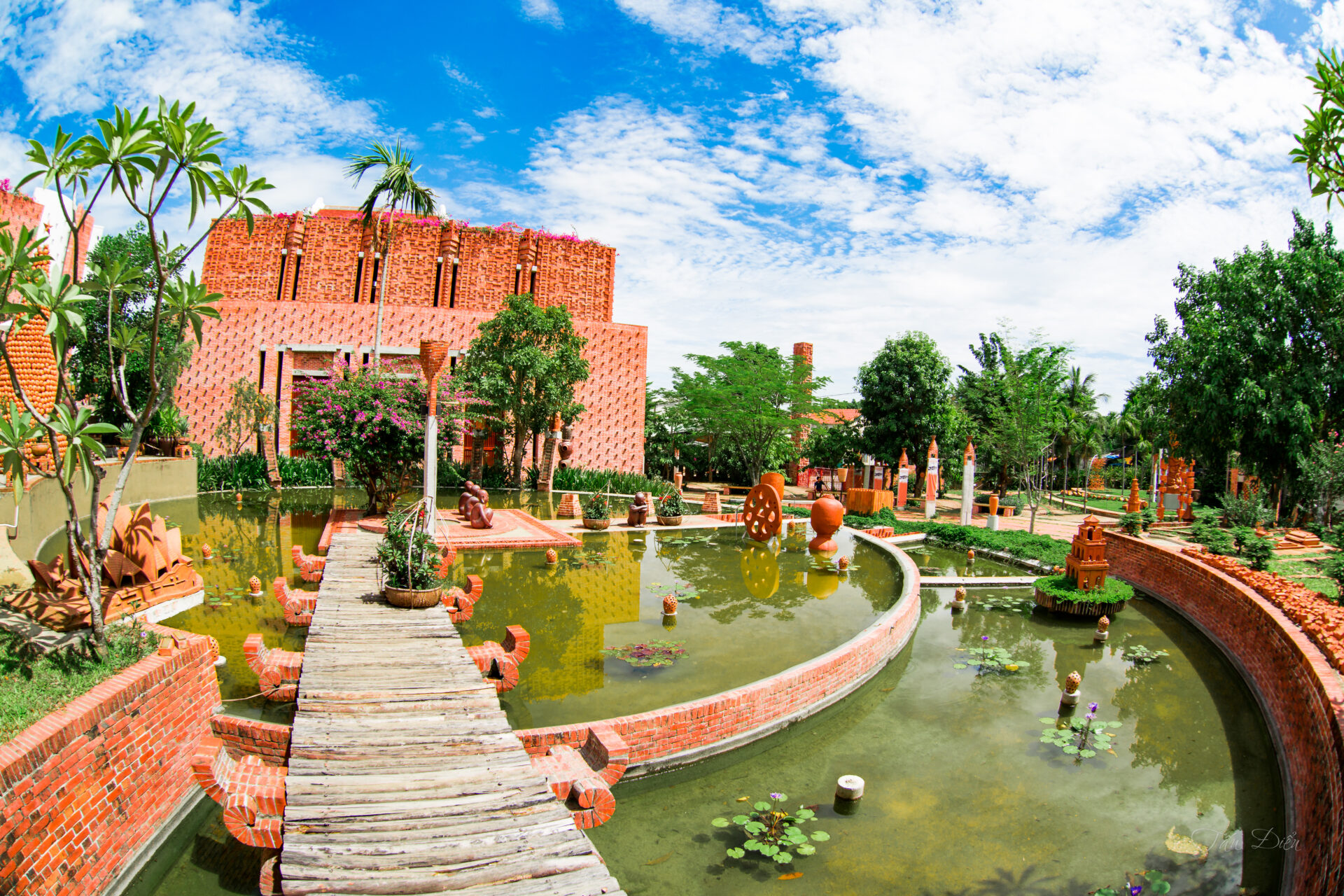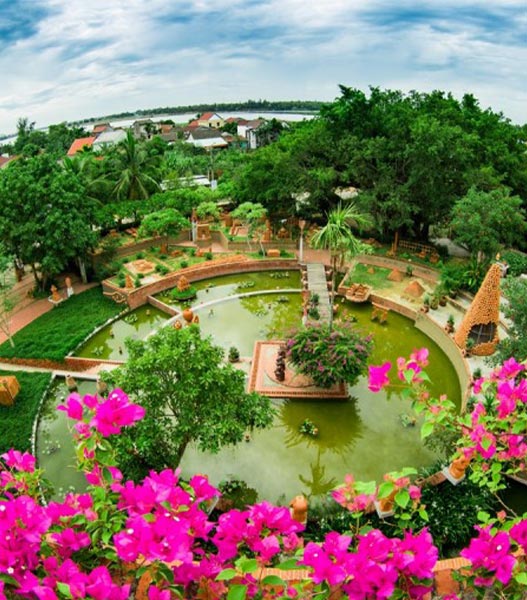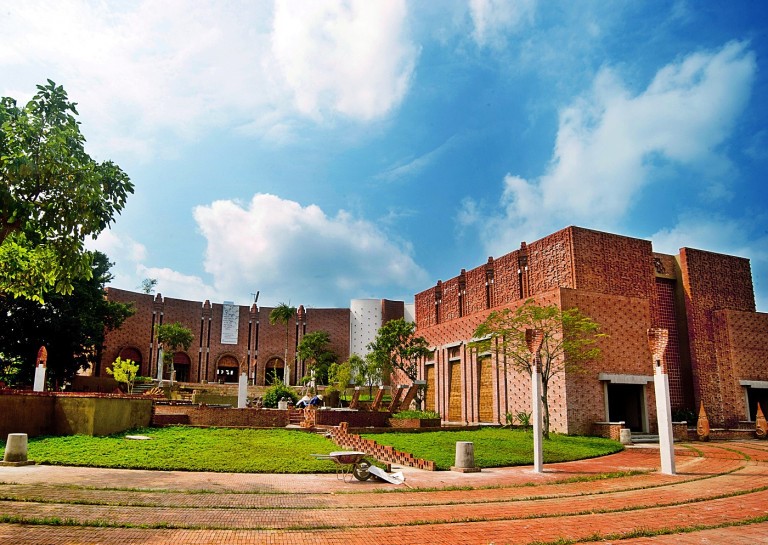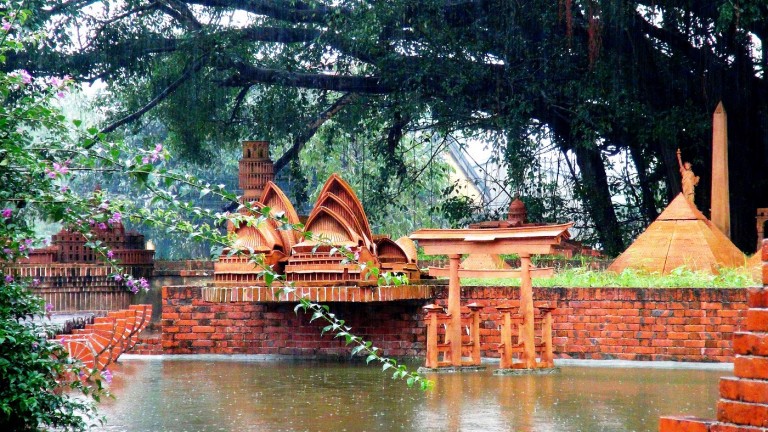
Coming to Thanh Ha pottery village, we can watch the pottery dance on the jars, walls, lanterns..., listen to the pottery soul talking about the past on the time-stained communal house roofs, the moss-covered houses, the faint shadow of our ancestors... If we want, we can sit down and polish pottery and find the soul of the land...
Thanh Ha Pottery Village is famous for its ceramic products, as well as bricks and tiles. The most special is the technique of making Yin Yang tiles that we can see today on the roofs of the ancient town of Hoi An. Red bricks, typical of the clay here, are also used in the construction of the museum. Thanh Ha Terracotta Park was designed, built and established by architect Nguyen Van Nguyen and his colleagues Nhavietcorp, who were born and raised in Thanh Ha, influenced by the long tradition and history of the craft village.
Park overview

Just like the village surrounded by water, the museum is located in the middle, surrounded by the village. The decoration in the Park is similar to that of a potter’s house: kilns, pottery wheels, workshops, product displays… The remaining areas are for experience and relaxation.
The two large buildings are not only derived from Cham or Sa Huynh culture, but also inspired by the two types of kilns in the village: the upside-down kiln and the upside-down kiln – two concepts of Yin and Yang in Eastern culture. The block of houses like the upside-down kiln creates an open space, connecting and exchanging, introducing traditional Vietnamese ceramic villages, and is a place to display contemporary works. The block of houses like the upside-down kiln, like the concept of preservation and conservation, is a place to introduce and preserve the 500-year history of the craft village, and display the products of the craft village.
When you enter the exhibition area and walk up the stairs to the top, you know for sure that it is an upside-down kiln. Standing on the upper stairs, which would lead to the roof, you can only see the sky. One visitor said it was like a stairway to heaven, and that is probably how the fire in the upside-down kiln felt. It could be coming from the top. Another building is like an upside-down kiln. The fire tends to go down. An upside-down kiln can reach a higher firing temperature but is more difficult to build.
Above the exhibition area, you can see products from other traditional pottery villages in Vietnam. And the top floor is dedicated to excavations, revealing to us how the Cham culture was built, how the Sa Huynh people lived in the past.
Two shapes inspired by traditional open and closed kilns
The impact of the museum is clear, some villagers have seen new possibilities and most of the shops are gradually being renovated. The river, with a 500-year history - the river that brought artisans from the north to establish the village, is also the river that helps Thanh Ha people transport pottery to all parts of the country. It is also the river that brings this place a large number of tourists from all over the world. They come and buy Thanh Ha terracotta products, to take home. Once again, today, history continues like that.


Above the exhibition area, you can see products from other traditional pottery villages in Vietnam. And the top floor is dedicated to excavations, revealing to us how the Cham culture was built, how the Sa Huynh people lived in the past.
Terracotta miniature model area
The impact of the museum is clear, some villagers have seen new possibilities and most of the shops are gradually being renovated. The river, with a 500-year history - the river that brought artisans from the north to establish the village, is also the river that helps Thanh Ha people transport pottery to all parts of the country. It is also the river that brings this place a large number of tourists from all over the world. They come and buy Thanh Ha terracotta products, to take home. Once again, today, history continues like that.
